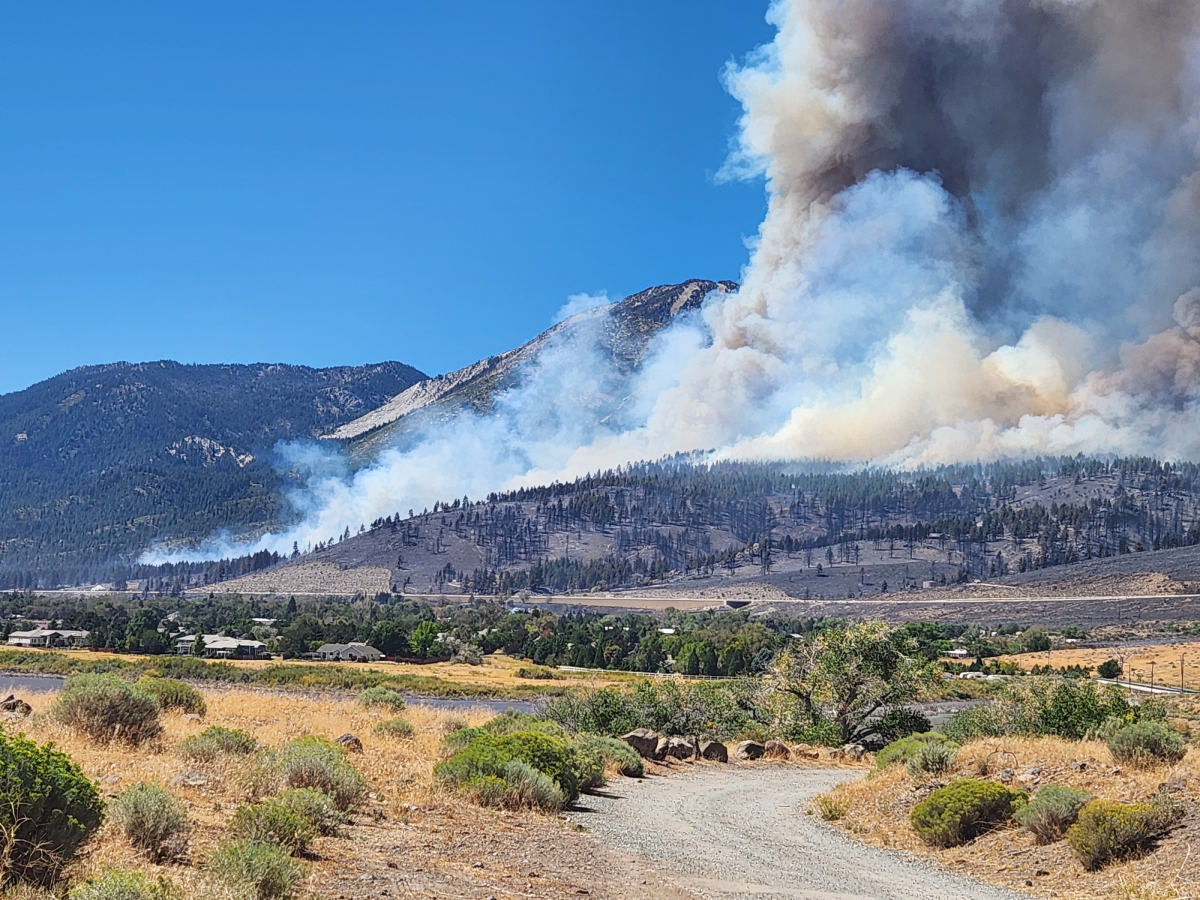E. Purpose of the CAP
The purpose of this Climate Action Plan (CAP)
What is a Climate Action Plan? A CAP is a “strategic document that outlines a collection of measures and policies to reduce greenhouse gas (GHG) emissions and actively address climate challenges. It defines reduction goals based on local priorities and develops a framework with tactical activities to help achieve those goals.” A climate action plan also “aims to address inequalities in the way the effects of climate change are being distributed.” For a full glossary of climate terms, see Appendix 1.

Wildfires are an essential part of forest and rangeland health. However, as climate conditions become hotter and drier, wildfires have grown more common, intense and destructive across much of the U.S., damaging communities and taxing the capacity of Washoe County and other jurisdictions and agencies to respond. Shown here, the Davie Fire on Sept. 8, 2024. Credit:
What are greenhouse gas emissions? Greenhouse gas emissions are gases that trap heat in the atmosphere. There are several different GHGs, and they can be created through a variety of sources. Carbon dioxide (CO₂) is the primary GHG emitted from human activities, and it mostly caused by burning fossil fuels like coal, natural gas, and oil. For in-depth explorations of GHGs and the science of climate change, Read The IPCC Reports
To slow the steadily rising heat, to improve daily air quality, and to reduce ongoing fire risk, we must reduce GHGs. The purpose of this CAP is to identify actions that can be taken across all sectors (Buildings, Transportation, Waste, etc.) in the short- and long-terms to help the County reach its long-term target of net zero emissions by 2050.
“Net zero” is a state of balance between emissions and emissions reductions. In 2019, the Nevada Legislature committed Nevada to pursuing "zero or near zero" greenhouse gas emissions by 2050.Washoe County is leading regional efforts to support that commitment.
This Climate Action Plan provides three types of information to support that goal:
- Explains the context, urgency, and opportunities of reducing GHGs
- Shares calculations of recent GHG emissions for the year 2021as well as projections of future GHGs
- Defines actions for 2025 - 2030 that can reduce GHG emissions
This information lives in four segments of the CAP: 1) this Introduction 2) County Operations CAP 3) Community GHG Inventory, and 4) Community CAP.
Climate Change is a wide-ranging phenomenon that impacts our community in many complex ways. This CAP is only a start to the work necessary to respond, focusing primarily on actions that mitigate (reduce) GHGs to minimize the climate damage in our region and globally, as well as actions that help our community adapt to climate- and other weather-related challenges in our community.
What’s Not Covered in this CAP
There are numerous topics this CAP does not address:
- Water Conservation. This is an important topic in the driest state in the Union. Historically, Washoe County has worked with Truckee Meadows Water Authority, the Nevada Department of Environmental Protection, One Truckee River, the Pyramid Lake Paiute Tribe and other regional stakeholders and partners to protect both water availability and quality.
- Wildfire and other disasters. The Washoe County Emergency Management Division is updating the County’s Hazard Mitigation Plan to address the threat of wildfires and other disasters. The County partners with Truckee Meadows Fire Protection District, Nevada Division of Forestry and other local, state and national partners to address fire prevention and response in our communities.
- Additionally, there are many topics related to the environment and sustainability — protecting native pollinators and other local species and ecosystems, microplastics, PFAS and other toxic chemicals, etc. There are also topics this CAP addresses but not comprehensively — public health, food deserts, transportation, protection of and access to parks and open space and other topics. Washoe County will, under direction from our Board of County Commissioners, work internally and with regional partners to address these needs.
